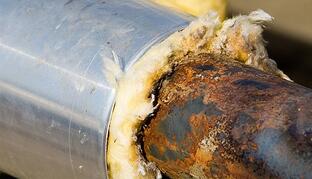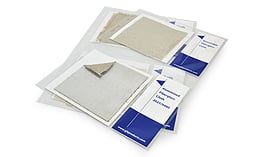As we have discussed before in, “Corrosion Under Insulation: What You Need to Know” corrosion under insulation (CUI) is a real threat to many industries, including refining, petrochemical, and power.
CUI can cause failures of systems and can have a costly effect due to downtime and repairs. Unfortunately, CUI tends to remain undetected because the corrosion is hidden and is hard to find under the mechanical insulation.

There are a variety of methods used today to inspect for CUI.
Insulation Removal- The most effective method is to remove insulation, check the surface condition of the pipe, and replace the insulation. However, it is expensive to remove insulation and is time-consuming.
Profile Radiography- This is an effective evaluation method, but becomes technically challenging in piping systems over 10 inches in diameter and is limited to verifying relatively small areas. Nobody can work within the area while the inspection is underway, this can result in downtime and manpower scheduling conflicts.
Ultrasonic Thickness Measurement- This is an effective method, but limited to small areas. This process is expensive because holes have to be cut out of the insulation and then cover the holes created, with caps/covers.
Infrared- In the right conditions, infrared can be used to detect damp spots in the insulation, because there is usually a detectable temperature difference between the dry and wet insulation.
Neutron Backscatter- This method is used to detect wet insulation in pipes and vessels. A radioactive source that emits high energy neutrons into the insulation. If moisture is found, the hydrogen nuclei reduce the energy of the emitted neutrons. This is a relatively quick and accurate process.
Real-Time Radiography- Provides a clear view of the pipes outside diameter through the insulation, producing a profile of the pipe outside diameter on a TV monitor that is viewed during the inspection.
Tell us in the comments below what your preferred method of inspecting CUI and why?


